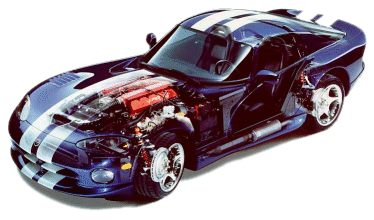QUARTER MASTER RACING CLUTCHES General Clutch Maintenance Instructions
Flywheel
Inspect for physical damage and cracks. Inspect ring gear for
excessive wear. Check friction surface for flatness. Maximum allowable warpage is .006". When resurfacing the flywheel, the step height of .100" +.000"/-.002" must be maintained. (Quarter Master
offers a flywheel resurfacing service for a nominal fee.)
Clutch Housing
Check that the pressure plate and floater plate(s) slide through the housing freely. This will ensure the clutch will release
properly. Check for cracks from high mileage, discoloration from excessive heat, and grooves cut into the inside diameter by the friction discs due to bell housing flex and misalignment or a worn pilot bushing.
Clutch Pack
Inspect for worn splines, cracked hubs, loose rivets, and cracked or bent discs. Measure the discs and replace when the minimum thickness is reached.
Floater Plates
Check for flatness. Maximum allowable warpage is .006". Measure the thickness. Minimum thickness is .177".
Pressure Plate
Check for flatness. Maximum allowable warpage is .006". Measure the
thickness. Replace if below the minimum specified for that particular clutch.
Clutch Cover
Check diaphragm spring for discoloration from excessive heat. Check for excessive wear on spring fingers from
release bearing contact. Check for cracks on aluminum clutch covers after extended service. The clutch cover is not a field serviceable item. (Quarter Master can rebuild your clutch cover for a nominal fee.) |



